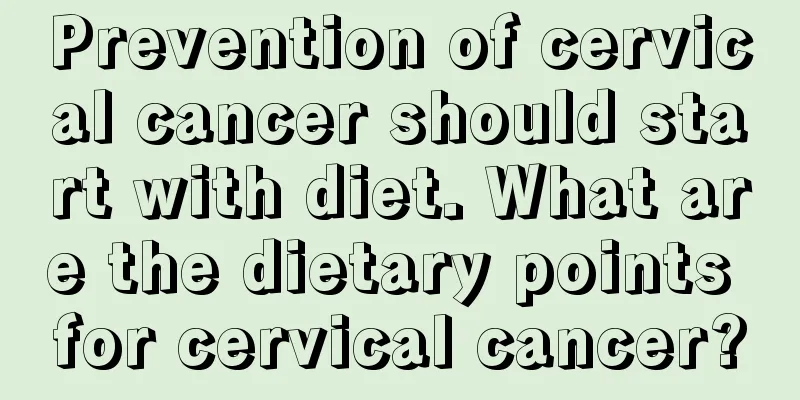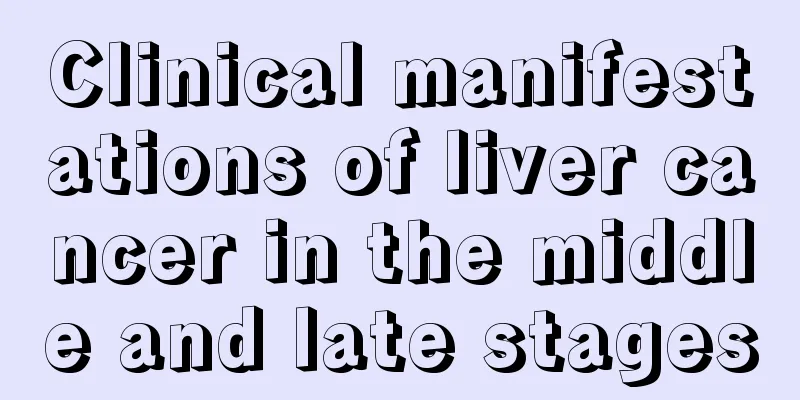Prevention of cervical cancer should start with diet. What are the dietary points for cervical cancer?

|
Cervical cancer (ie, cervical cancer) can occur in the cervical lip and endocervical canal. However, cervical cancer usually occurs at the junction of the two epithelial layers of the external cervical os. The posterior lip is more common, followed by the endocervical canal, and then the anterior lip. At first, cervical cancer is limited to the epithelial layer of the cervical mucosa and does not penetrate, which is called carcinoma in situ. When cancer invades the submucosal stroma, it is called invasive cancer. Cervical cancer diet tips 1. Supplement B-carotene B-carotene will be converted into vitamin A, which helps protect the immune system from the attack of free radical molecules and has a significant immune-enhancing effect. According to scientists, the blood B-carotene of patients with cervical cancer is lower than that of the control group. B-The risk factor for cervical cancer is low intake of carotene. A-More animal foods are: animal liver and eggs. B-Spinach, rapeseed, amaranth, lettuce leaves, pumpkin and other plant foods rich in carotene. 2. Supplement trace elements zinc and selenium Zinc and selenium play a very important role in the production and function of immune cells. Scientific research shows that low levels of zinc and selenium in the body can lead to a low immune system. Cervical cancer is associated with trace elements zinc and selenium. The lack of these trace elements leads to a significant increase in the incidence of cervical cancer and breast cancer. It is particularly important to supplement zinc and selenium in the diet. Animal foods containing trace elements zinc and selenium include: oysters, fish, lean meat, animal offal, eggs, beef kidneys, pig kidneys, shrimps, etc. Eggs have the highest zinc content. Plant raw materials containing zinc and selenium are: edible fungi, seaweed, sesame, peanuts, wheat germ powder, nuts, etc. 3. Eat more soybeans and their products Such as tofu, soy milk, dried tofu, celery, broccoli, edamame, sweet peas and other vegetables. Since these foods can supplement phytoestrogens, the isoflavones and lignin contained in phytoestrogens are considered by scientists to have antioxidant effects. Phytoestrogens can inhibit the growth of cervical adenocarcinoma and squamous cell carcinoma, inhibit cell division, and effectively prevent the invasion or metastasis of cancer cells. |
<<: Dietary methods to prevent cervical cancer What to do if you have cervical cancer
>>: How to prevent cervical cancer in life What is the best food to eat for cervical cancer
Recommend
What are the early symptoms of bladder cancer
What are the early symptoms of bladder cancer? Sy...
What are the early symptoms of lung cancer? These are the early symptoms of lung cancer
Lung cancer is a malignant tumor that seriously e...
What are the nursing methods for laryngeal cancer
With the improvement of medical level, the treatm...
How does thyroid cancer cause lymphadenitis?
Thyroid cancer is a malignant tumor originating f...
What are the hazards of natural gas to the human body?
With the continuous advancement of technology in ...
Red blood streak removal meeting
Red blood streaks are a very special condition on...
I have chest pain when I sleep at night
After finishing a day's work, we all hope to ...
What to eat the next day after staying up late
For adults, a healthy amount of sleep should be b...
How to wash clothes after Coke spilled on them
If you drink Coke in the summer and accidentally ...
What to do if drinking hurts your stomach
It is often seen that people vomit, talk nonsense...
Which department should I go to if I suspect lung cancer? You can go to these three departments
If you suspect lung cancer, you usually go to the...
What are the symptoms of gallstones?
In fact, many times when gallstones occur, there ...
I get a stomachache when I eat something cold in the summer
In the summer, due to the hot weather, many peopl...
How many times does benign epilepsy occur in a year?
Epilepsy is one of the major diseases that affect...
Is liver cancer contagious?
Is liver cancer contagious? Liver cancer is not c...









